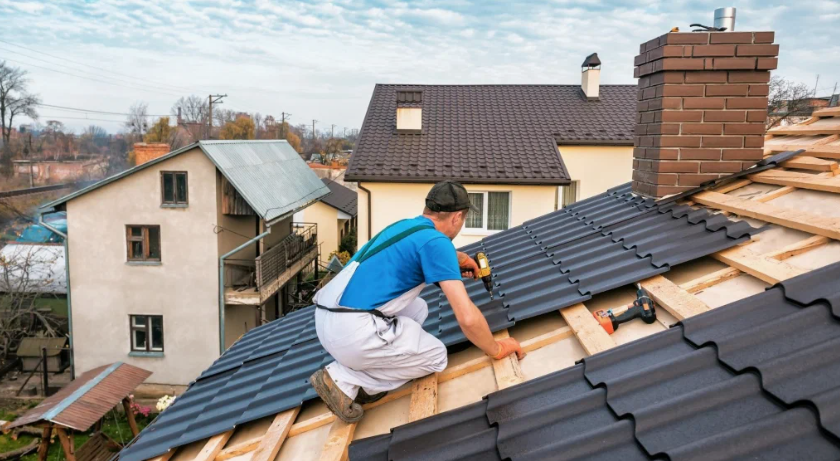Your roof works 24/7 — rain or shine — to protect your home, your family, and everything inside. But because it’s out of sight, most homeowners don’t give it much thought… until something goes wrong.
The truth? Roofing issues don’t appear overnight. Most problems start small and grow worse with time. The good news is, you can catch them early and avoid major repairs — if you know what to look for.
Let’s go over the most common roofing problems, when you should consider repairs vs. replacement, and what steps you can take now to avoid expensive surprises later.
🔍 Common Signs Your Roof Might Be Failing
Not sure if your roof needs attention? Watch for these red flags:
1. Water Stains on Ceilings or Walls
This usually means there’s a leak somewhere — possibly from missing shingles, damaged flashing, or cracked underlayment.
2. Missing or Damaged Shingles
Wind, storms, and age can cause shingles to crack, curl, or fall off. Left unchecked, this opens the door to water damage.
3. Granules in the Gutters
If you’re seeing black grit in your gutters or on the ground, your shingles are wearing out. This reduces their ability to protect your home.
4. Sagging or Uneven Rooflines
This could point to structural issues like rotting wood or poor ventilation in the attic.
5. Higher Energy Bills
If your heating or cooling costs are rising, your roof’s insulation might be failing — especially if there’s poor airflow in the attic.
🛠️ Repair or Replace? Here’s How to Decide
Not every roofing problem means you need a full replacement. Sometimes, a simple repair is enough.
✅ When Repairs Are Enough:
-
The damage is limited to a small area
-
You have a relatively new roof (under 10–15 years old)
-
Shingles are missing or cracked, but the rest is intact
-
Flashing or seals are loose around vents or chimneys
❌ When Replacement Is Better:
-
Your roof is 20+ years old
-
You’ve had multiple repairs already
-
Water damage has reached the attic or interior walls
-
The structure underneath is rotting or sagging
-
You want to improve energy efficiency for the long term
Pro tip: Always get a roof inspection before deciding — a professional can help you weigh the pros and cons of both options.
💰 What Does Roof Repair or Replacement Cost?
Pricing depends on factors like:
-
Roof size and slope
-
Material used
-
Level of damage
-
Your location and labor rates
Average Costs in 2025:
-
Minor repairs: $300 – $1,000
-
Major repairs: $1,000 – $3,000
-
Full replacement (asphalt shingles): $6,000 – $12,000
-
Metal or tile roofing: $15,000 – $30,000+
Don’t ignore “small” issues — catching problems early can save thousands in the long run.
📅 How Often Should You Inspect Your Roof?
At minimum, inspect your roof once per year and after major storms. A professional inspection takes 30–60 minutes and can spot things you might miss from the ground.
Also, check your attic every few months for:
-
Moisture
-
Mold
-
Daylight peeking through the roof boards
⚠️ Don’t Wait for a Leak to Take Action
Waiting until you see water dripping from the ceiling is like waiting for your engine to catch fire before checking the oil. Roof issues get more expensive — and more damaging — the longer you wait.
If you even suspect a problem, get a professional inspection. Many companies offer them for free, and it can give you peace of mind (or a heads-up) before things get worse.
❓ FAQs About Roofing (2025)
1. How long does a typical roof last?
Asphalt shingles usually last 20–30 years. Metal and tile roofs can last 40–75 years with proper maintenance.
2. Does insurance cover roof damage?
If the damage is caused by storms, hail, fire, or falling debris, it’s usually covered. Age-related wear and tear is not. Always check your policy.
3. How can I tell if my roof has a leak?
Look for ceiling stains, peeling paint, mold smells, or damp insulation in the attic. These are often the first signs of a hidden roof leak.
4. Can I repair a roof myself?
Small fixes like replacing a shingle might be DIY-friendly — but it’s risky. Roofing work involves heights, safety gear, and knowledge. When in doubt, call a pro.
5. How much does a roof inspection cost?
Many roofing companies offer free inspections. A more detailed, certified inspection might cost $150–$300 but could save you thousands.
6. What causes roofs to fail early?
Poor installation, lack of maintenance, and extreme weather are the biggest culprits. A good roof needs proper ventilation, quality materials, and regular care.
7. What’s the best time of year to replace a roof?
Spring through early fall is ideal for roof work. Dry weather allows shingles to seal correctly. Emergency repairs can happen any time.
📞 Don’t Wait Until It’s Too Late
Think your roof might be in trouble? The best next step is a quick inspection — no pressure, no commitment. Just the facts.

